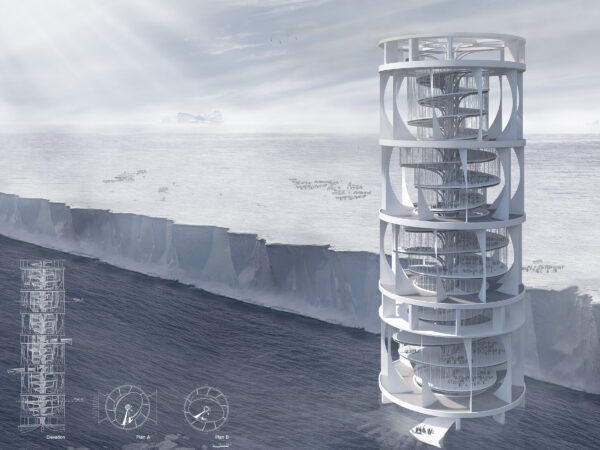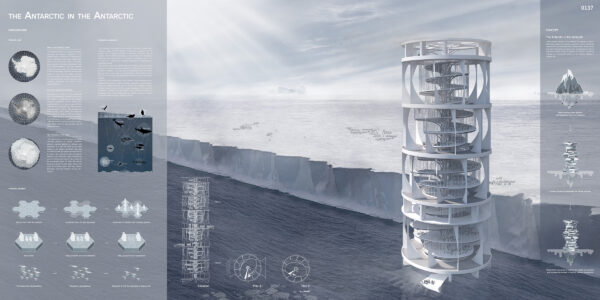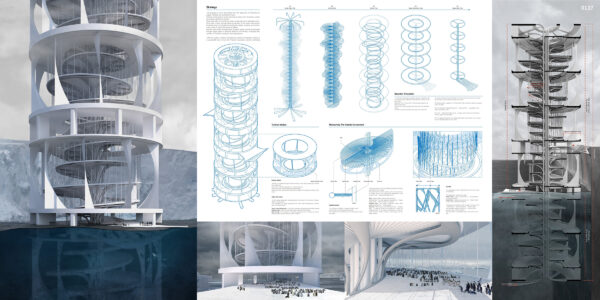2022 Skyscraper Competition
Editors’ Choice
Oh Minji, Kim Donghyun
South Korea
Glaciers covering Antarctica are melting at a rapid pace due to global warming. As the temperature of the Antarctic sea surface increases, the ice shelf on the Antarctic coastline melts and flows into the Antarctic sea, increasing the overall area of Antarctica and increasing sea level. Antarctica is losing its habitat due to the collapse of glaciers, and due to the lack of phytoplankton due to the increased sea temperature, the population of krill shrimp is decreasing, and Antarctica is losing its food. Currently, the majority of Antarctic animals are registered as endangered species, and it can be seen that the Antarctic ecosystem is rapidly being destroyed. In order to preserve the Antarctic ecosystem, an environment in which Antarctic animals can live is needed.
We propose a tower that utilizes the rich resources of Antarctica to supply habitats and build a food chain.
The natural characteristics of Antarctica are strong winds and waves, low water temperatures in deep sea water, and abundant nutritional salts. These features play an important role in maintaining the habitat environment inside the tower and constructing a food chain. Strong winds and waves are used for turbines to create the energy needed for towers. Low water temperatures pass through the habitat, making the habitat’s environment similar to that of the existing habitat. Rich nutritional salts meet with solar energy to produce algae and become food for krill shrimp. The preceding functions are accomplished through the circulation of seawater. Seawater moves through four types of pipes and one area that are spread throughout the tower. Passing through different types of pipes, it performs functions such as habitat cooling and algae generation. The circulation of seawater begins with deep sea water at the bottom of the sea and moves throughout the tower. First, Seawater moves to the habitat and cools the habitat. After cooling, the hot seawater cools to an appropriate temperature and flows along the edge of the tower to the bottom of the turbine module. Seawater collected from the bottom of the turbine module receives solar energy and generates algae. The generated algae moves to the central pipe and is discharged to the sea level. As a function to maintain the habitat environment, there is an ice wall in addition to the habitat cooling. Ice walls created by flowing outside the pipe in winter play a role in blocking the wind.
These systems provide new habitats and food chains to the destorying Antarctica. This creates a new Antarctic in Antarctica and becomes a sustainable tower where the Antarctic ecosystem can be maintained.

















